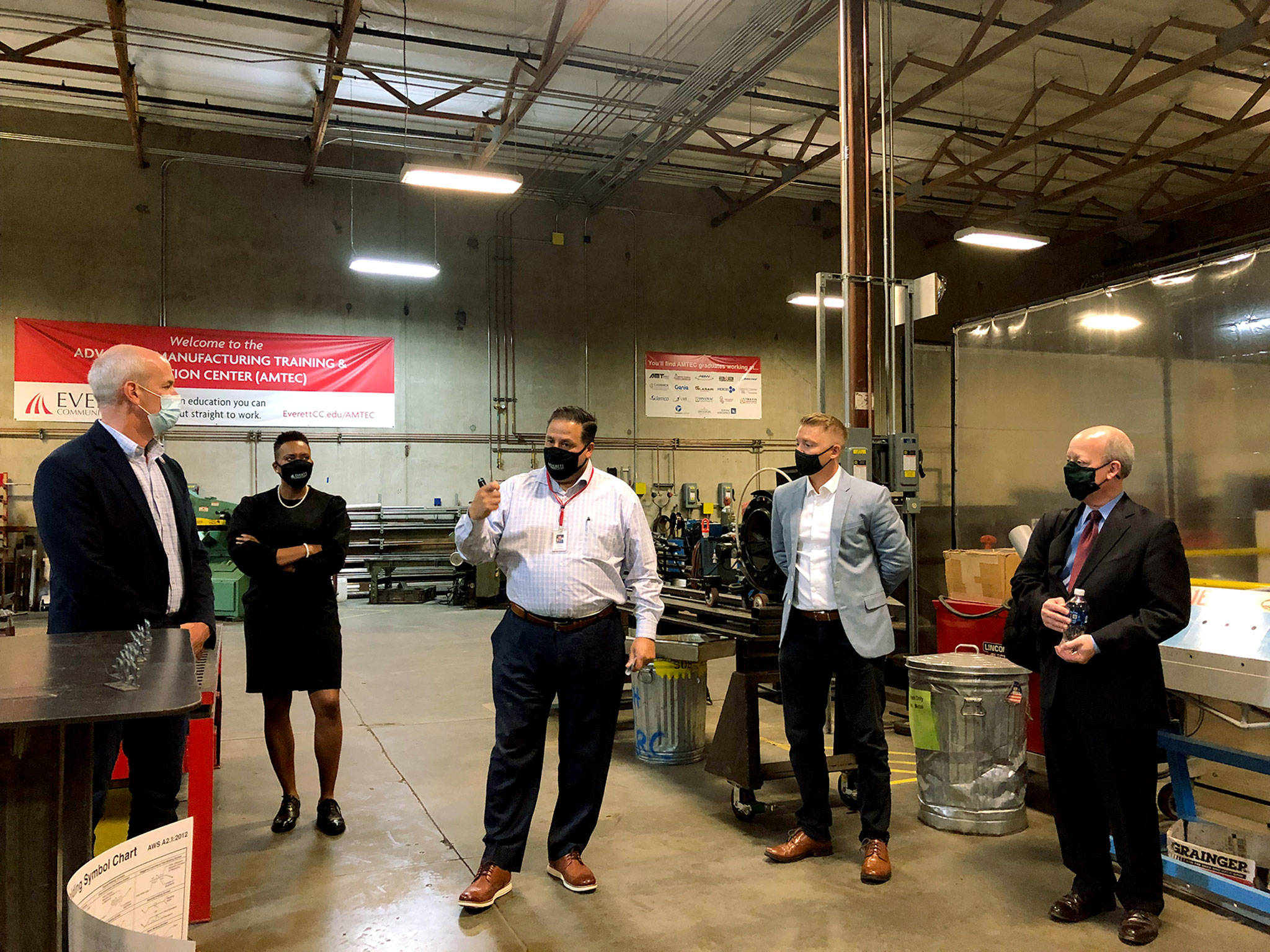EVERETT — The nation’s aerospace industry laid off an estimated 100,000 workers last year and furloughed another 220,000 due to the COVID-19-induced downturn in air travel.
Revenues plummeted 50% or more at some firms.
Local aerospace companies — including Aviation Technical Services in Everett, aircraft component manufacturer Senior Aerospace AMT in Arlington and composite materials maker Hexcel in Burlington — were forced to lay off hundreds of workers in their struggle to stay in business.
Now some of those companies are faced with a new challenge: ramping up operations quickly.
In some markets, air travel and its conjoined twin, the aviation manufacturing and repair industry, are making a faster-than-anticipated recovery.
Aviation Technical Services, one of the nation’s largest aircraft maintenance and repair companies, has been able re-hire many of the workers it let go, said David Bowen, manager of training and development at ATS.
The company lost 60% of its business when the “airlines shut down,” Bowen said. “Now things are starting to pick up and recover.”
Other firms are still operating at reduced capacity, or say they’re struggling to find the resources to call back workers or hire new employees.
A new U.S. Department of Transportation grant program aims to help aerospace businesses keep more workers on their payrolls.
Enacted this spring, the Aviation Manufacturing Jobs Protection Program, which is funded through the American Rescue Plan, provides up to $3 billion to help companies in the aviation manufacturing and repair industry, said Elliott Black, the program’s director.
On Friday, Black attended a roundtable discussion at Everett Community College, where he heard from union representatives, educators, U.S. Rep. Rick Larsen, D-Everett, and a half-dozen local company representatives with questions about the application process. Washington is home to more than 1,500 aerospace companies, including some 200 in Snohomish County.
Larsen and U.S. Rep. Ron Estes, a Republican from Kansas, authored the bipartisan bill on which the Aviation Jobs Protection Program is based.
“We wrote the House version of the bill and it became part of the American Rescue Plan Act that is being implemented now,” Larsen told participants. Larsen is also chairman of House Subcommittee on Aviation, which oversees the Federal Aviation Administration.
During the application period from mid-June to mid-July, the jobs protection program received more than 360 applications in 37 states — requests for a total of $626 million in aid. Of that, 38 Washington-based applicants requested $43 million, Larsen said.
Job protection grants can be used to pay half the wages of specific aerospace employees for up to six months. In return, the business must document spending and agree not to furlough or lay off those workers during the six-month period.
Companies that missed the first call for applications can still participate. The program is accepting new applications through Sept. 1. It hopes to begin making disbursements this fall, Black said.
“First and foremost, I recognize the importance of this industry, not just to the Pacific Northwest, but to our entire national economy,” Black said. “Our national security system absolutely depends on a strong, vital, sustainable aviation industry. We get that — loud and clear.
“I’ve had to explain this to some folks who aren’t in the aviation industry,” Black said. “It’s no different than if you had to drive a truck across the country. If there isn’t a place to buy replacement tires or gas or oil filters, you’re not going to make it.”
At Friday’s roundtable, Black heard some impressive local survival stories.
When the economic downturn slashed business at Commercial Aircraft Interiors in Arlington — the company refurbishes airplanes — it converted its stock of refurbished airplane windows into much-needed face shields.
“It was an unexpected opportunity,” Carlos Veliz, the company’s business strategist, told Black. “We must have sold about 3,000. They were tinted and were good for outside, places with a lot of glare.”
Waypoint Interiors, a Paine Field-based aerospace firm, was developing an ultraviolet lighting system to disinfect commercial airplanes when the pandemic struck.
“Used properly, it can sanitize the plane with a flip of the switch,” said Robert Olson, the company’s CEO.
When hard-hit airlines told Waypoint they didn’t have the resources to purchase the system, the company marketed the UV system to school districts as a way to de-germ their school buses. The strategy was successful, with several school districts showing interest, Olson said.
“Now, we’re starting to get some aerospace business,” he said.
For more information about the Aviation Manufacturing Jobs Protection Program. go to transportation.gov/AMJP.
Janice Podsada; jpodsada@heraldnet.com; 425-339-3097; Twitter: JanicePods
Talk to us
> Give us your news tips.
> Send us a letter to the editor.
> More Herald contact information.

























